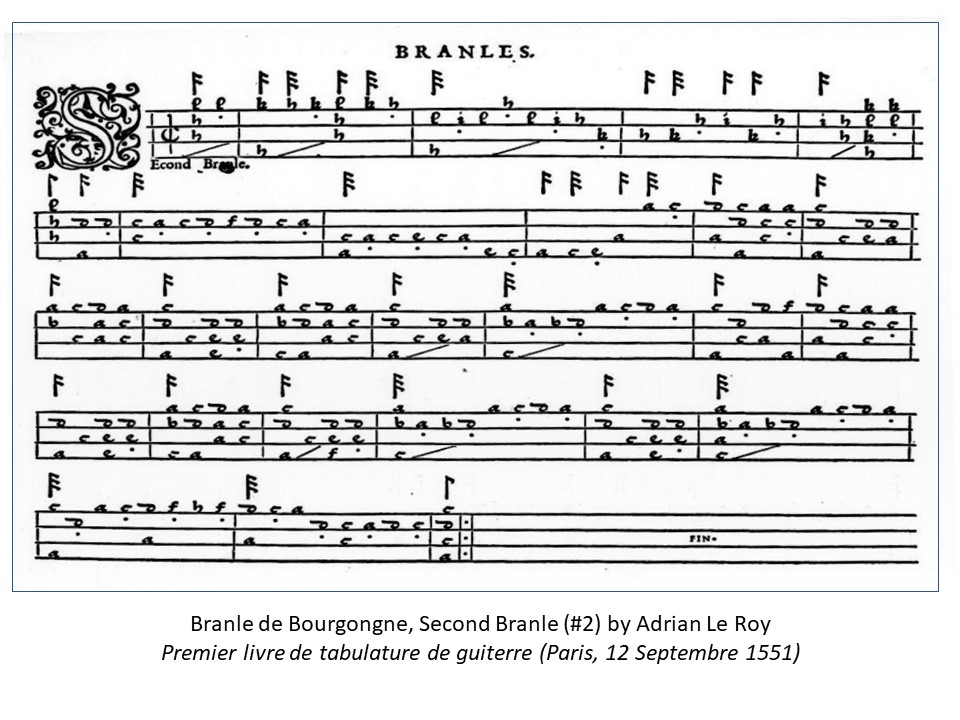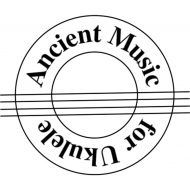It’s not that difficult. I’ve shown a sample score as well as an illustration of a Renaissance guitar (you can do the same comparison for lutes and lute tablature).
The letters in tab correspond to the frets (a is an open string, b is the first fret, etc., with the letter j skipped by convention, and I’ve seen up to the letter k for the 9th fret and l for the 10th fret) and the horizonal lines correspond to the strings. The length of the notes is the vertical line above the strings — the single tail represents an quarter note, two tails are an eighth note, three tails are a sixteenth note, etc, and dot in the tail increases the note length by a half (e.g. a dotted eighth note). Keep playing the rhythm until it changes. The dot under the note says to play the note with your index finger.
Tablature is quite compact and “dense” and does not require a key signature. You can show a lot with a little.
Simple isn’t it. Please try it.
It does have some issues in that the upper and lower voices are difficult to separate, especially if they have different rhythms. It’s also hard to indicate phrasing and there are no dynamic markings.
Modern tablature is similar using numbers instead of letters for the frets, with zero indicating an open string (easier and quicker for the mind to grasp).


